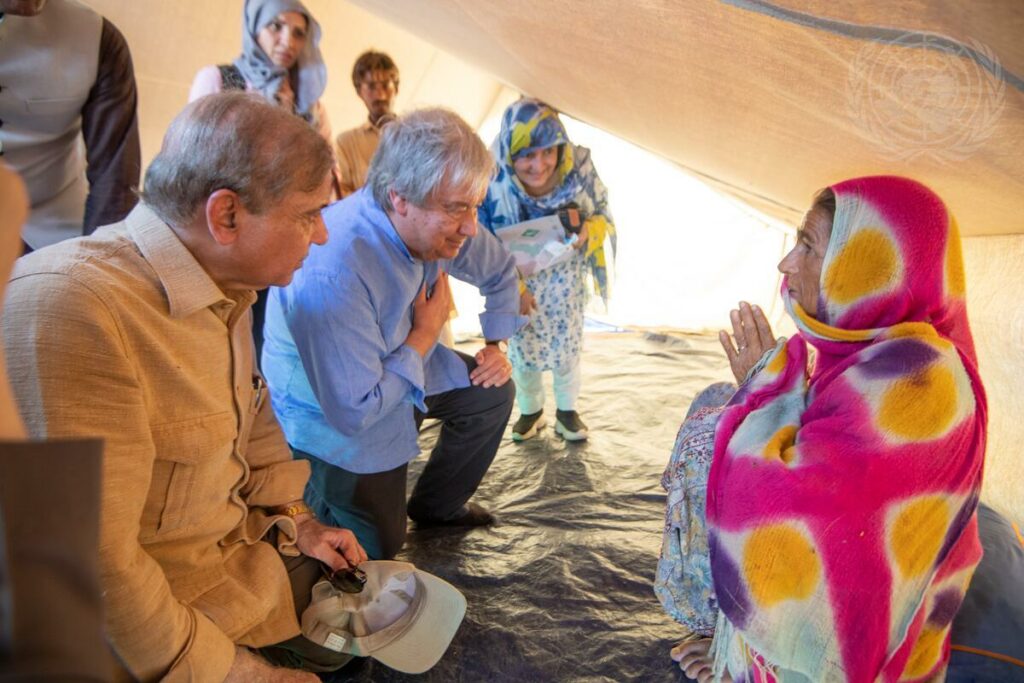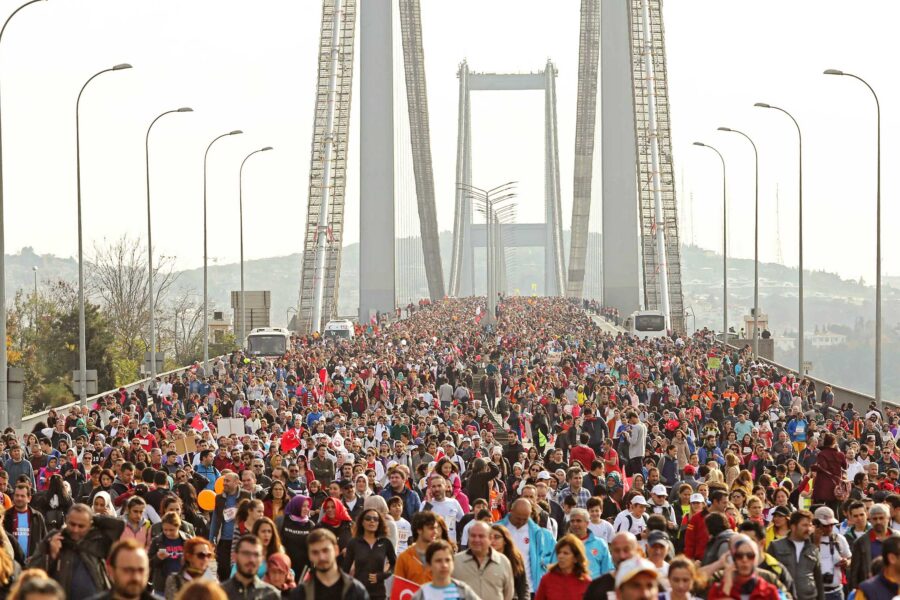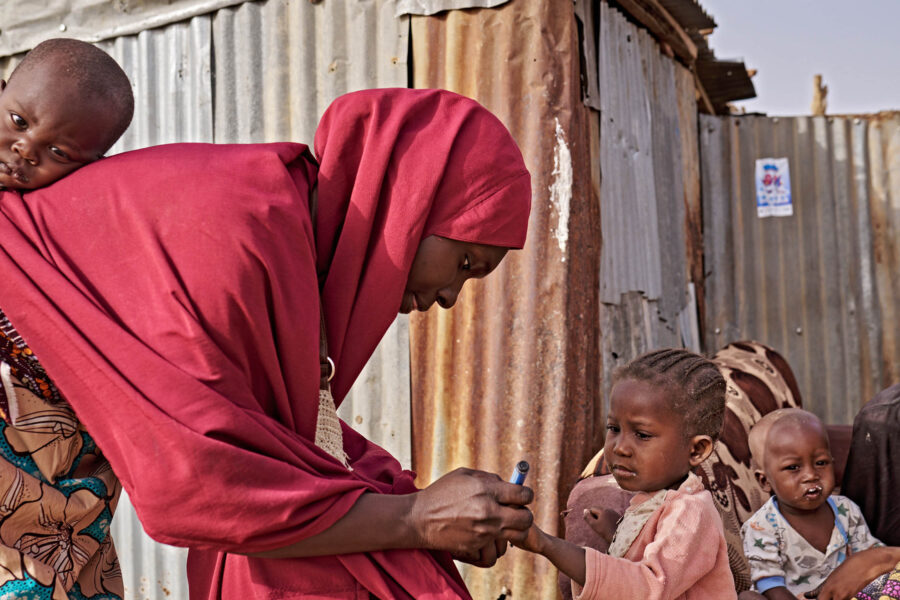Fixing the global financial system
In the words of the UN Secretary-General, developing countries have limited access to the financial resources they need to address the dramatic challenges they face and implement the Sustainable Development Goals (SDGs). The global financial architecture, created for a very different world eight decades ago, needs urgent reform to make it fit for purpose
Financing — Global

The recent confluence of global shocks has battered developing countries. While advanced economies injected trillions into their economies, most developing countries, constrained by limited fiscal space and high borrowing costs, were unable to invest in recovery, climate action, and sustainable development. As always, it is the poorest and most vulnerable who are most affected. The statistics are sobering:
- At current trends, 574 million people – nearly 7% of the world’s population – will still be living in extreme poverty in 2030.
- 345 million people now face acute food insecurity.
- By the end of 2022, nearly 60% of all low-income countries were at high risk of, or in, debt distress.
As highlighted in the Financing for Sustainable Development Report (FSDR) 2023, the “great finance divide” risks becoming a lasting sustainable development divergence, increasing the risk of further geo-economic fragmentation.
As an international community, we have not found an adequate response to this divide, in part because our institutions are out of date. Designed in 1945, the international financial architecture has been unable to support mobilization of stable and long-term financing at scale for investments needed to combat the climate crisis and achieve the Sustainable Development Goals (SDGs) for the eight billion people in the world today. While the system has evolved over time, it has become increasingly at odds with the needs of a world characterized by climate change and increasing systemic risks, extreme inequality, highly integrated financial markets, and profound technological and geopolitical change.
The gaps and inequities in the system are manifested in myriad ways. Developing countries face high borrowing costs in financial markets relative to risk, as measured by market volatility, even after adjusting for historical defaults. This means, for example, that an investment in clean energy, which might be competitive in a developed country, can be prohibitively expensive in many developing countries. There are also enormous differences in access to liquidity in times of crisis. For example, G7 countries, with a population of 772 million people, received USD 280 billion in the historic 2021 allocation of International Monetary Fund (IMF) special drawing rights (SDRs), while the African continent, with 1.3 billion people, received only USD 34 billion. In addition, there is dramatic underinvestment in global public goods, including pandemic preparedness and climate action, alongside repeated global financial crises.
But the recent crises have also led to momentum for reform. The FSDR 2023 found that the international financial architecture is currently in flux, as countries seek to remake international organizations, norms, and frameworks. Discussions are ongoing in informal country groupings, such as the Group of 20 (G20), the Group of Seven (G7), and the Bridgetown Initiative, and most recently at the Paris Summit for a New Global Financing Pact. The issues are also on the agendas of the World Bank and IMF boards, as well as at the UN and other forums.
Reforming global finance
In May 2023, the UN Secretary-General published a policy brief on reform of the international financial architecture, laying out concrete recommendations. First, global economic governance (for example, increasing the voice of developing countries in IMF and World Bank governance) must be at the heart of reforms to build trust, inclusion, and equity in the multilateral system. The policy brief calls for updating the system to reflect the changing world, and for exploring creative ways to increase the voice of countries and to separate the ability to pay from access to finance and decision-making.
Second, it is time to address longstanding gaps in the sovereign debt architecture. Debt markets need to work better, including having:
- more transparency
- better credit assessment
- stepped up support to countries to strengthen debt management capacity
- improved debt contracts (for example, including climate-resilient debt clauses)
When needed, debt restructurings are too little and too late, resulting in protracted crises and high social costs. Implementation of the G20 Common Framework for Debt Treatment has been extremely slow, undermining confidence and limiting take-up. The Secretary-General’s policy brief puts forward an innovative two-step solution to address sovereign debt distress, starting with a debt workout mechanism. This mechanism could support creditor coordination and comparable treatment of official and commercial creditors in the G20’s common framework by tasking debt treatment to an expert body.
Third, development finance needs to be massively scaled up. Today the multilateral development bank (MDB) system is a fraction of its historical size (less than one-fifth of the 1960 funding level relative to GDP), despite investment needs that are orders of magnitude higher. MDBs are taking action. The World Bank is developing an evolution roadmap to adjust its mission and operational and financial model. The recently published MDB Vision Statement at the Paris summit calls for improving how developing countries work together as a system, among other issues. The African Development Bank is developing a proposal to re-channel IMF SDRs through MDBs, which could then be leveraged three to five times. But increases in capital will be needed if the MDBs are going to address global challenges while still ensuring affordable, long-term financing for country needs.
Fourth, access to the global financial safety net is uneven. While the 2021 SDR issuance was historic, the current allocation of SDRs is inefficient in fighting crises. Developed countries have pledged to re-channel USD 100 billion in SDRs to countries in need, but only half of that amount has been delivered. SDR issuance needs to be more automatic in a countercyclical manner or in response to shocks, with allocations based on country need and vulnerabilities. Creative solutions, such as ex-ante (before the event) agreement on rechanneling SDRs, should be explored. Strengthening macroeconomic coordination is also needed to reduce volatility and prevent crises.
Fifth, there is also a need to reset the rules for the financial system to promote stability with sustainability, including to:
- address short-termism and excessive leverage
- create sustainability norms for private investment and business
- reduce greenwashing
For example, financial standard setters could have clear SDG and climate transition plans incorporated into their mandates.
Brokering consensus
As the custodian of the SDGs and the convenor of climate negotiations, the United Nations has an important role to play in ensuring that reforms to the international financial architecture support implementation of the SDGs and climate agreements. Such reforms will affect all countries and people, and all aspects of the SDGs.
While final implementation of reforms can happen elsewhere, the UN brings together voices from all countries on an equal footing, along with other stakeholders. A fourth international conference on financing for development, scheduled for 2025, will provide an opportunity to reach consensus on a package of reforms that can make the architecture fit for purpose for the 21st century.





